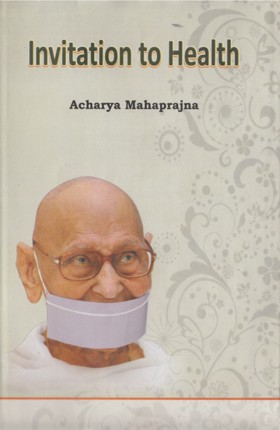Heaven is indirect. Moksa is very much indirect; the peace of mind is direct. The attraction towards direct is much more compared to the attraction towards indirect. A teacher was explaining the style of interpretation to his student. He said—Religion is not indefinable. It can be explained if it touches philosophy of life; then it is more useful and more attractive. Mere edificatory style does not generate persisting attraction. Take the help of character or example and make your statement attractive. The objective of propagation should be peaceful philosophy of life.
There are three criteria of philosophy of life.
- What benefit an individual is getting?
- What benefit the society is getting? and
- The existing problem is being solved or not?
Forest of fear: Forest of security
Wakefulness of the presentA country had strange tradition. After the age of sixty years, the king was required to give up the thrown. A new king was coroneted. This tradition continued for a long time. After being abdicated every king would repent but during the tenure of their rule no one seriously thought of this problem. An idea came to the mind of king Pradyumna. If I take hold of the present, the summit of future will be in my hand. Without catching hold of the coti of our head (lock of hair on the crown of the head) the shadow of our coti cannot be trapped. He concentrated on the present and discovered the solution of the problem. He imagined making that forest attractive where the abdicated king was to be left. He prepared a plan. Very soon the forest turned into an elegant and pleasing garden. Magnificent palaces, royal roads, gigantic pond, enhanced its value. Arrangement for food and medicine, whatever was needed, everything was available there. The dreadfulness of forest turned into the charming beauty of playhouse. The king was very happy. There was no fear in his mind. The time of abdication approached. After enthroning the son, he himself went for forest-living. That forest life was more pleasant and attractive than the royal palace. People of higher positions aspired to live there. That which was the forest of fear turned into forest of security.
Life is harmonyMany forests of fear are there facing human beings. Many people are compelled to live a life of misery in them. How good it would be if someone with new imagination and new planning turn that forest of fear into forest of security. This can be possible only by evaluating the present. Wakefulness of the present alone is the dictum of success of life. On that basis alone the foundation of the temple of bright future can be laid. A religion singing/narrating the story of the glory of the past alone cannot attract for long. A religion showing the golden dreams of the future also cannot live for long. That religion alone can create permanent attraction which solves the problem of today.
Aim of lifePresent time is an incessant flow. Life is also an eternal flow. It is being lived but not understood. Body does its work. Senses, vital breaths, mind, and consciousness—all these do their own work. We understand their work but do not understand how to harmonize Life is the name of the coordination of body, senses, vital breaths, mind and consciousness. No one single of them is the essence of life.
Is body the life? No.
Are the senses the life? No.
Are vital breaths, mind and consciousness the life? The answer will be, No. Then what is life?
Life is harmony. The integration of body, senses, vital breaths, mind and consciousness is life. Wheel is not a car. Engine also is not a car. Accelerator and brake are also not a car. Car is a summation of all these.
Livelihood: lifeMany people ask—what is the aim of life? Its answer is very simple and very complex also. In the language of vyavahāra naya (empirical standpoint) the aim is development, happiness or pleasure. In the language of niścaya naya (absolute / standpoint) the aim is freedom. Human is a rational being. He determinates his goal and arranges means to realize it. Body, senses, vital breaths and mind are the means for the realization of the goal. The ultimate aim is consciousness, development of consciousness, freedom of consciousness. To be unto one’s self, to know one’s self, and to safeguard one’s existence, this is the objective aim. On this basis alone the freedom of human being is safe. There has been disorder in the avowed aim. Human being made gratification of body and senses as aim and that is why pleasure became the main objective of life.
Hedonism is a well debated theory of ethics. To get pleasure moral or religious life is necessary. But pleasure was confined to body and senses and that is why morality was not needed, livelihood became more important. Today in the entire society there is a conflict between life and livelihood. Livelihood should be good, parents are also worried about this and Student also is worried. Life should he good, its worry is perhaps less to the parents and it is less in the student also, in such a situation business mentality has developed.
It is said—a businessman reached to Yamarāja (Lord of death) after death. Taking account of his life Yamarāja asked where you want to go, to heaven or hell. The businessman replied - 'Sir, that place where two paisa can be earned. I have nothing to do with heaven or hell.' The development of this mentality is the biggest hindrance for development of life. The competition of material things and money is the consequence of this mentality. This mentality has given rise to many not known problems. Will the thoughtful youth of today think of drawing a line of demarcation between life and livelihood?
 Acharya Mahaprajna
Acharya Mahaprajna
